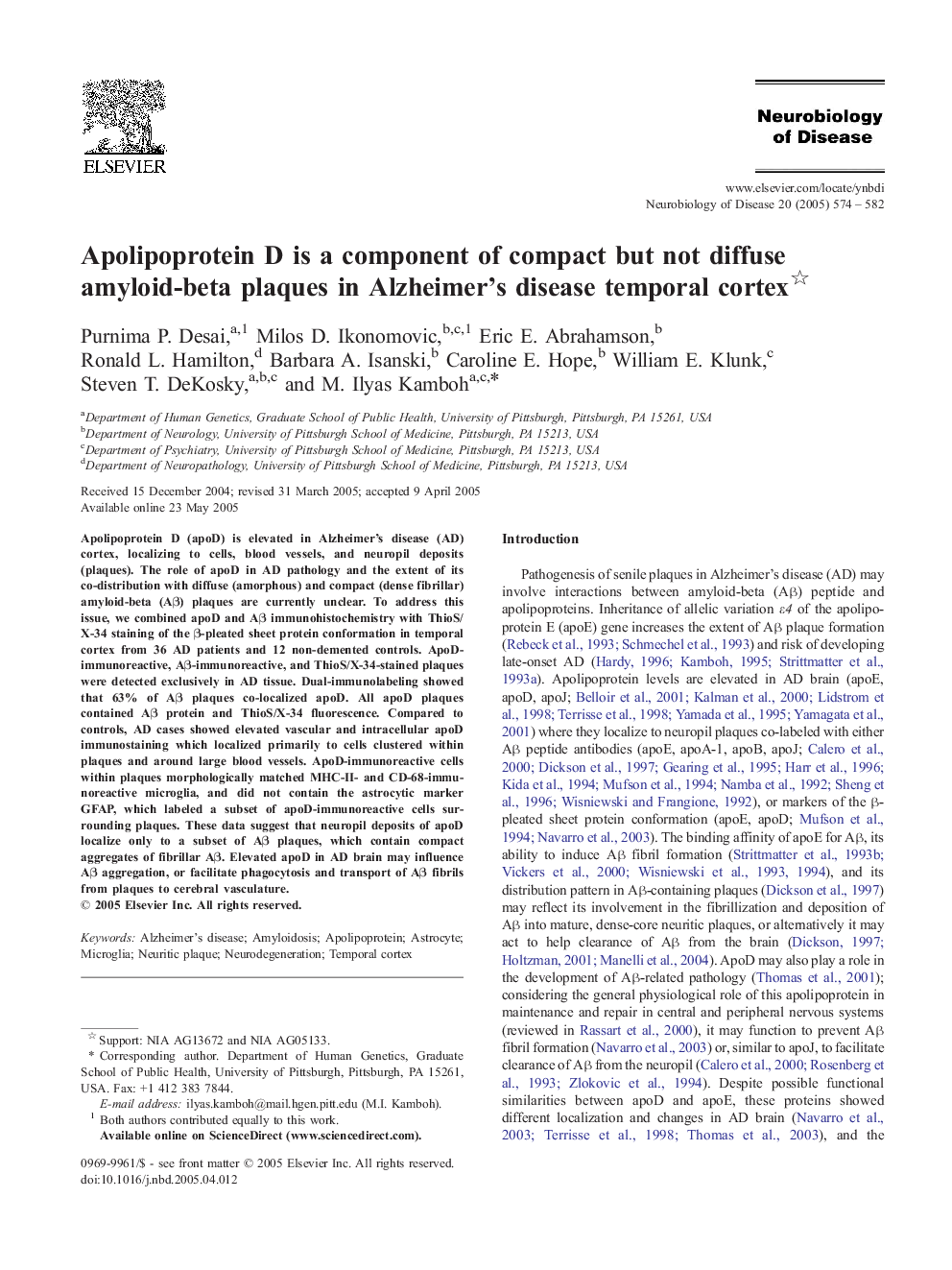| Article ID | Journal | Published Year | Pages | File Type |
|---|---|---|---|---|
| 9989638 | Neurobiology of Disease | 2005 | 9 Pages |
Abstract
Apolipoprotein D (apoD) is elevated in Alzheimer's disease (AD) cortex, localizing to cells, blood vessels, and neuropil deposits (plaques). The role of apoD in AD pathology and the extent of its co-distribution with diffuse (amorphous) and compact (dense fibrillar) amyloid-beta (Aβ) plaques are currently unclear. To address this issue, we combined apoD and Aβ immunohistochemistry with ThioS/X-34 staining of the β-pleated sheet protein conformation in temporal cortex from 36 AD patients and 12 non-demented controls. ApoD-immunoreactive, Aβ-immunoreactive, and ThioS/X-34-stained plaques were detected exclusively in AD tissue. Dual-immunolabeling showed that 63% of Aβ plaques co-localized apoD. All apoD plaques contained Aβ protein and ThioS/X-34 fluorescence. Compared to controls, AD cases showed elevated vascular and intracellular apoD immunostaining which localized primarily to cells clustered within plaques and around large blood vessels. ApoD-immunoreactive cells within plaques morphologically matched MHC-II- and CD-68-immunoreactive microglia, and did not contain the astrocytic marker GFAP, which labeled a subset of apoD-immunoreactive cells surrounding plaques. These data suggest that neuropil deposits of apoD localize only to a subset of Aβ plaques, which contain compact aggregates of fibrillar Aβ. Elevated apoD in AD brain may influence Aβ aggregation, or facilitate phagocytosis and transport of Aβ fibrils from plaques to cerebral vasculature.
Keywords
Related Topics
Life Sciences
Neuroscience
Neurology
Authors
Purnima P. Desai, Milos D. Ikonomovic, Eric E. Abrahamson, Ronald L. Hamilton, Barbara A. Isanski, Caroline E. Hope, William E. Klunk, Steven T. DeKosky, M. Ilyas Kamboh,
